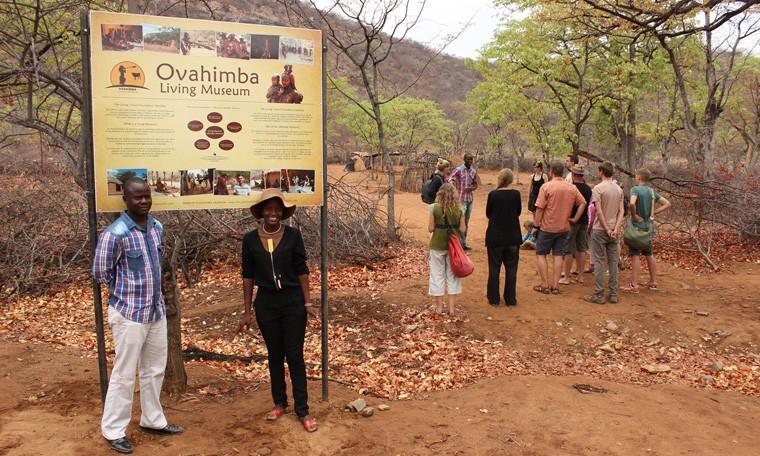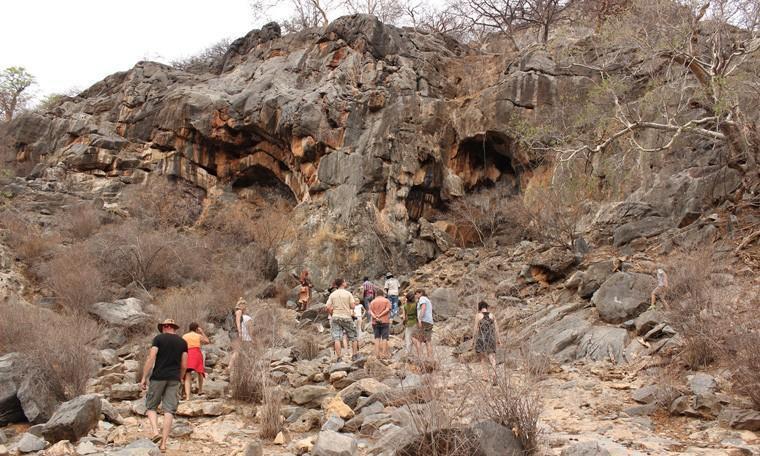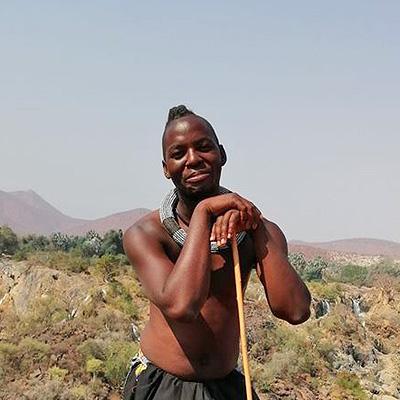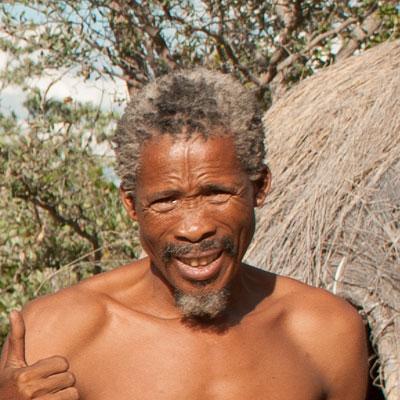Fascinating culture of the San
Ovahimba Living Museum Opening
On the 5th of November the Living Culture Foundation Namibia (LCFN) opened the 6th Living Museum in Namibia: The Ovahimba Living Museum. Together with the San, the Mafwe, the Mbunza and the Damara, the Ovahimba are now the 5th language group to own a Living Museum and to invite visitors to get to know their culture.
What started with an idea and an initiative of John Tjipurua - now the manager of the Living Museum - and the Living Culture Foundation, could turn into a productive success story which developed within 1.5 years. The opening of the Museum was a huge success for us!
On the 5th of November the Living Culture Foundation Namibia (LCFN) opened the 6th Living Museum in Namibia: The Ovahimba Living Museum. Together with the San, the Mafwe, the Mbunza and the Damara, the Ovahimba are now the 5th language group to own a Living Museum and to invite visitors to get to know their culture.
What started with an idea and an initiative of John Tjipurua - now the manager of the Living Museum - and the Living Culture Foundation, could turn into a productive success story which developed within 1.5 years. The opening of the Museum was a huge success for us!
The Living Museum
The traditional village of the museum, surrounded by a small mountain range, is situated about 40 km north of Opuwo on the road to the Epupa Waterfalls. With an own campsite, a huge Baobab tree and some caves around it, the area of the Living Museum is really unique. In the west the traveler finds the rough and wild Kaokoveld.
The buildings of the Living Museum represent an authentic Ovahimba village structure as it was found in pre-colonial times. In this respect the erection of the Living Museum kept to the authenticity principle of the LCFN. Surrounded by a fence made of camelthorn trees and bushes there are about 12 small huts and the beautiful hut of the main wife which is situated opposite the cattle and goats kraal. Between the hut and the kraal is the holy fire which should never burn out for it represents the connection between dead and living. Between the huts the visitors finds little roof structures providing shade for the people who are doing pottery, are tanning leather and are preparing food. In some distance of the traditional village the blacksmith shows his skill and knowledge.
At the moment about 40 actors work at the Living Museum.

Preparations for the opening of the Living Museum
Already two days before the opening of the Living Museum, a mixed group of 8 members of the LCFN from Germany, Namibia, Slovakia and the Czech Republic (amongst them Ralf Kühn and Sebastian Dürrschmidt, two directors of the voluntary association) traveled to the Kaokoveld to help with the last preparations before the opening of the Living Museum. Marketing material as well as six large and small sign boards were brought from Windhoek. The professional sign boards had to be erected in Opuwo and at the road to the Living Museum. This wasn’t as easy as expected due to the nature of the rocky soil that was found. But exactly on time, just before the opening of the Living Museum, all sign boards were at place after some hours already the first visitors found their way into the Living Museum.
Apart from the members of the LCFN, there were some more attendants of the opening including two journalists, a member of ATC - one of the biggest Namibian tour operators - as well as the first official tourist group.

The opening of the Living Museum
Around 11:30 the official opening started with a detailed introduction into the history and the daily life of the Ovahimba with John as a guide. The thorough explanations and the description of the importance of the kraal were followed by milking a goat, an activity in which the guests could and did participate in.

After that one of the highlights of the opening ceremony took place. A young cow, which was donated by the LCFN, was ritually sacrificed. This was a rather unusual experience for most of the attendants and definitely nothing for the faint hearted. When the cow was slaughtered the Ovahimba men read the future in the intestines of the cow. We hope that not everything that was seen will realize in the future.
After the cow was slaughtered and the meat was distributed, the visitors were introduced into the art of the traditional blacksmith. The blacksmith is working at a bit of a distance outside the village, which is not unusual for Namibian tribes as the skill of blacksmithing is something that should be kept secret.

On the bush walk to follow the Ovahimba demonstrated their knowledge of traditional plant use. Also the traditional production of jewelry and wood carving was shown. All programs were interactive and the visitors were encouraged to take part if they wanted; the best way to experience the culture of the Ovahimba up close and personal. Another highlight was the extensive and exciting singing and dancing. Every visitor was greeted by name and was honored with a song.
The most unique characteristic of this Living Museum is the interactivity and the comprehensiveness offered in the programs. The visitor dives into another world and another time! The devoted involvement of the men in the Ovahimba Living Museum is special and nowhere else seen in Namibia.

learn more about the Ovahimba Living Museum and who want to spend more time with the “red nomads”. Considering the variety of programs this is more than recommendable.
At the end of the official opening members of the LCFN and John gave short speeches full of thankfulness and positive attitude. From now on the success of the Living Museum lies in the hands of the community.
We wish the people of the Ovahimba Living Museum a successful future from the bottom of our hearts.
When you subscribe to the blog, we will send you an e-mail when there are new updates on the site so you wouldn't miss them.


























